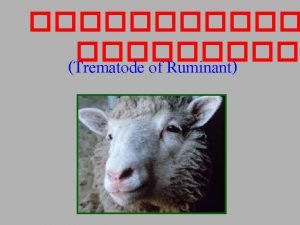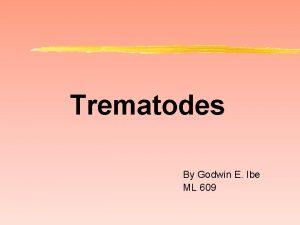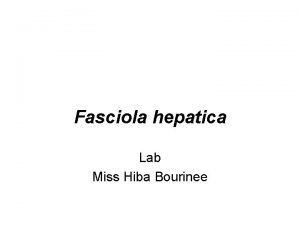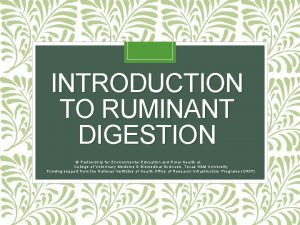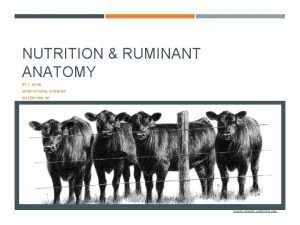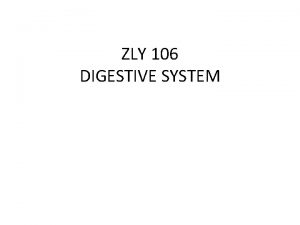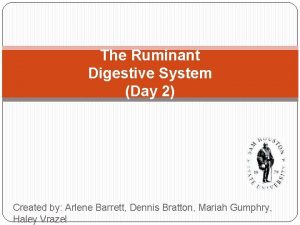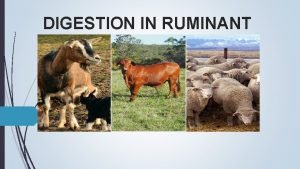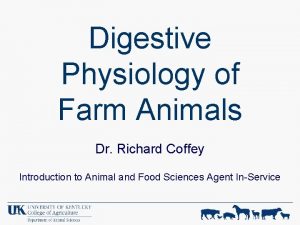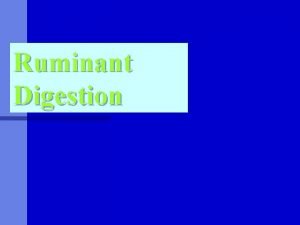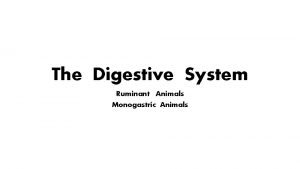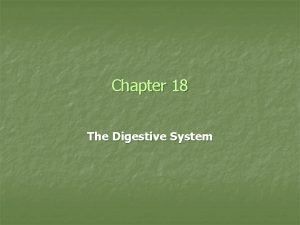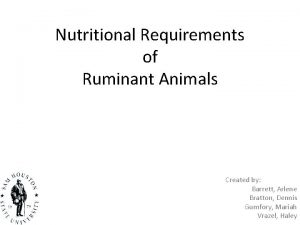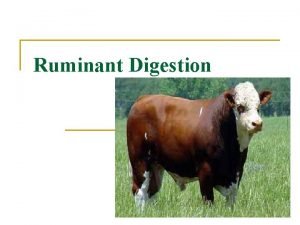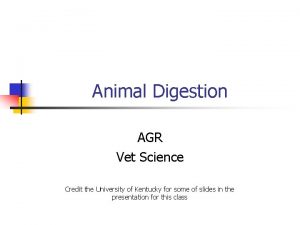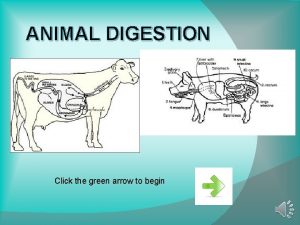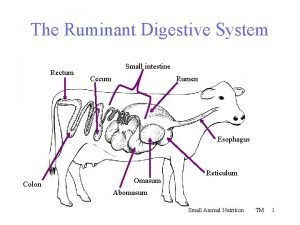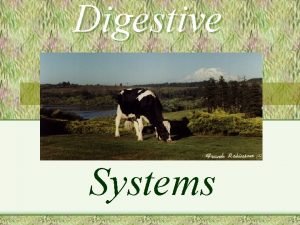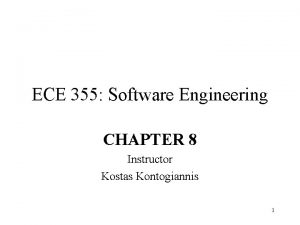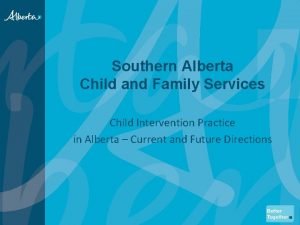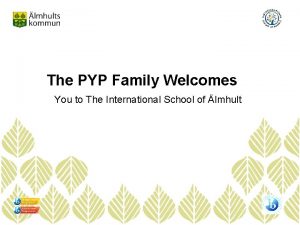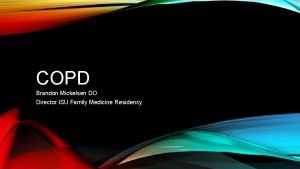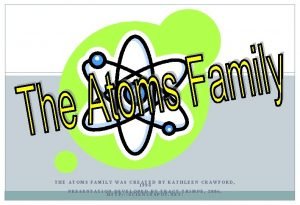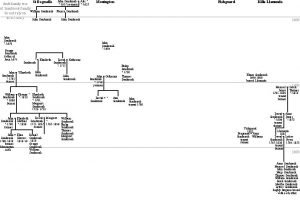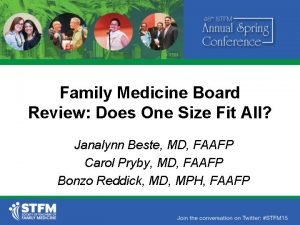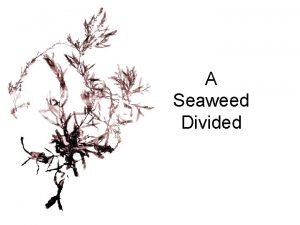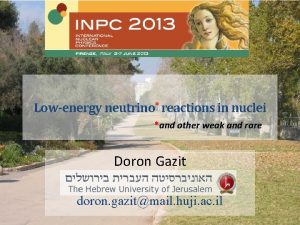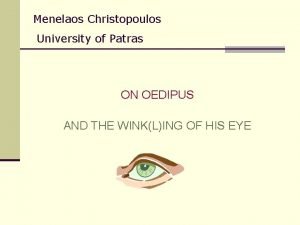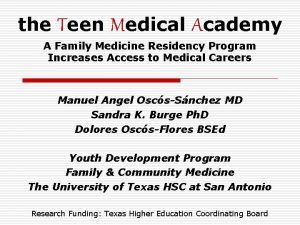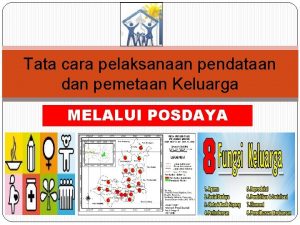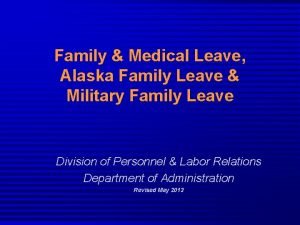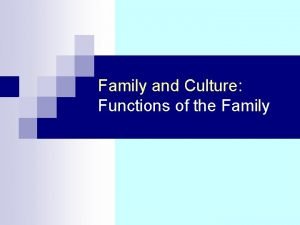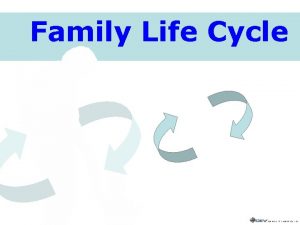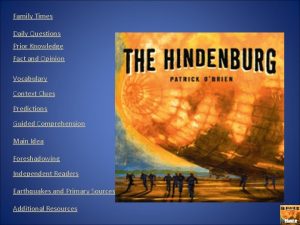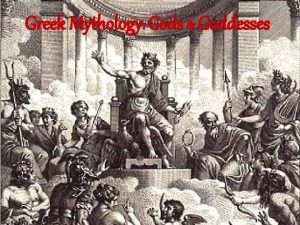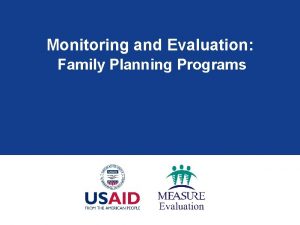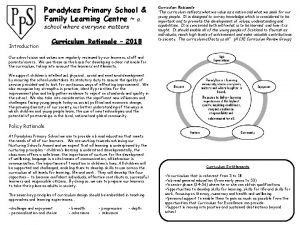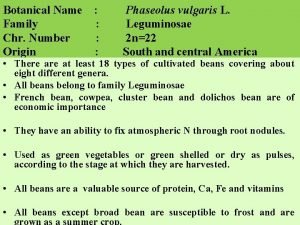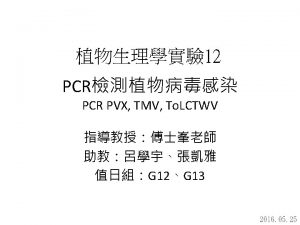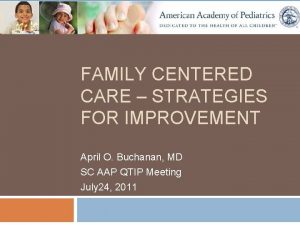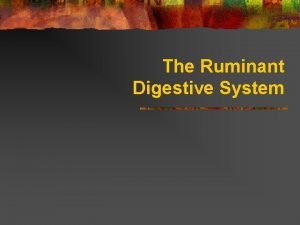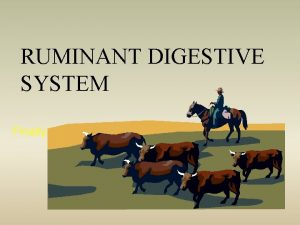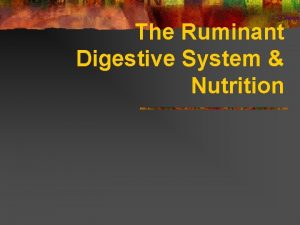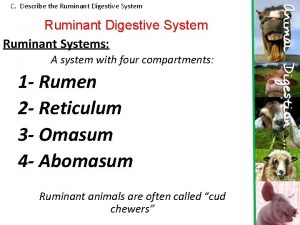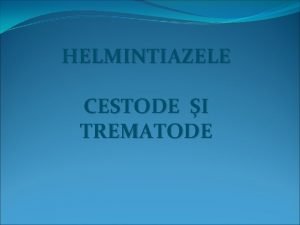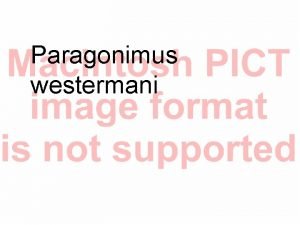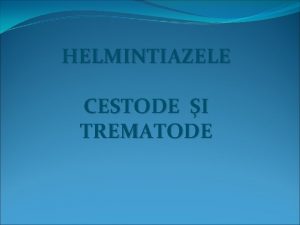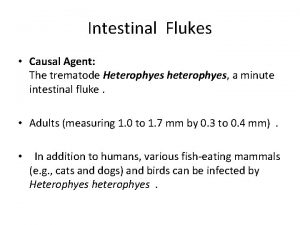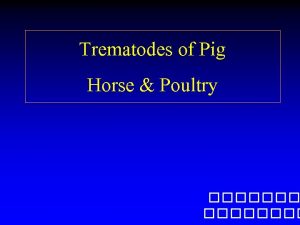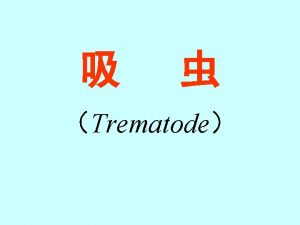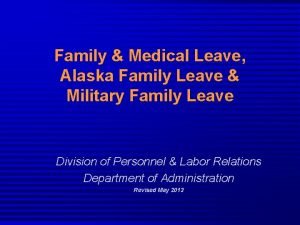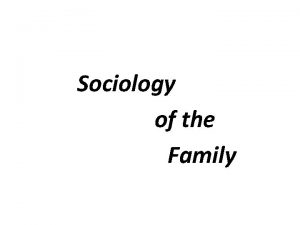Trematode of Ruminant Trematode of Ruminant Family Fasciolidae



































































































- Slides: 99

������ (Trematode of Ruminant)

Trematode of Ruminant • Family Fasciolidae • F. gigantica, F. hepatica • Family Dicrocoelidae • Dicrocoelium dendriticum • Eurytrema pancreaticum

• Family Paramphistomatidae • Subfamily Paramphistominae • Subfamily Gastrothylaxinae “Rumen Fluke” • Subfamily Gastrodiscinae

• Family Schistosomatidae Schistosoma spindalis

Family Fasciolidae • Organ: bile duct • Host: cattle, buffalo, sheep, goat, man • Species F. hepatica: warm to cold climate F. gigantica: tropical zone

• Morphology – leaf like – oral sucker close to ventral sucker – spiny tegument – short pharynx & esophagus

– branches: intestinal caeca, testis, ovary, vitelline gland – genital pore: anterior to ventral sucker – no seminal receptacle

Fasciola sp.

• Egg: large, thin shell, operculum, embryonic cells

Fasciola hepatica • Disease: Fascioliasis, Liver Rot • Organ: bile duct • Size: 3. 0 x 1. 3 cm

Life cycle

Development in Intermediate Host • Miracidium: penetration into snail • Sporocyst: 5 -8 redia • Redia: 20 cercaria • Cercaria: cystogenous gland • Metacercaria: a few minutes to 2 hours

Redia & Cercaria

Development in Final Host Metacercaria )duodenum( Mature fluke th 8) wk( Bile duct Young fluke Abdominal cavity Liver capsule th 5 -6) wk(

Metacercaria on Plant

metacercaria

Epidemiology • Hatching factor: temp 10 -26 C • Temperature of intermediate host • Size of intermediate host • Environ. affecting growth of snail • Temp. affecting on metacercaria

Immunity against Liver Fluke • antibody: only in experimental animals • adult sheep: susceptible to (re) infection • cattle: more resistance • host of F. hepatica: mammals (horse, mule, deer, pig, man, rabbit(

Pathogenesis • depends on # metacercaria ingested • damage: migration of young adult fluke through liver parenchyma, bile duct • disease : 2 types (acute & chronic form (

Acute Fascioliasis • rare case: sheep, goat > cattle, buffalo • ingestion of huge # of metacercaria • signs: traumatic hepatitis (migration), rupture of liver capsule, internal bleeding

• PM: hepatomegaly, pale, fibrinous clot, haemorrhagic tract • secondary bacterial infection • Clostridium oedematiens “Black Disease”

Chronic Fascioliasis • Pathogenesis: anemia, albumin decreased, hepatic fibrosis • post-necrotic scarring • ischaemic fibrosis • peribiliary fibrosis • monolobular fibrosis

Chronic Fascioliasis • Calcification, bilie duct obstruction “pipe-stem liver” • Lung • calcification, cyst

Migratory Tracks: pipe-stem liver

Thickness of Bile Duct

Clinical Pathology • acute: sudden dead • subacute: anemia, pale mm. , edema, hepatomegaly, ascites • chronic: anemia, emaciation, pale m. m. , edema “bottle jaw”, ascites, eosinophilia, low production

“bottle jaw”

Diagnosis . 1 History taking. 2 Clinical signs. 3 Fecal examination. 4 Post mortem examination. 5 Serological examination: serum enzyme (GLDH, GGT(

Treatment. 1 Triclabendazole (Fasinex): 20 mg/kg. 2 Rafoxanide: 7. 5 mg/kg. 3 Nitroxynil: 10 mg/kg, S. C. . 4 Oxyclozanide

Treatment. 5 Closantel: 10 mg/kg, S. C. = 1 ml/20 kg. 6 Niclofolan: 3 mg/kg, S. C. = 1. 1 ml/50 kg. 7 Albendazole: 10 mg/kg. 8 Bithional sulphoxide: 40 mg/kg

Prevention & Control. 1 anthelmintic treatment: twice a year. 2 control & elimination of snail: Cu. SO 4. 3 fencing of water resource

Human Fascioliasis • Intermediate host: – F. hepatica: L. truncata – F. gigantica: L. auricularia rubiginosa • Thailand: F. gigantica • Infection: metacercaria (water plant(

Pathology • young adult: peritonitis, urticaria, liver abscesses • adult: thickness, inflammation, fibrosis, obstruction of bile duct • clinical signs: jaundice, pain, anorexia, vomiting, fever, anemia

• Ectopic migration young adult • brain • lung • eye • pancreas

Diagnosis • History taking • Fecal examination • Serological examination: immunodiffusion, FA test • Biopsy: ectopic case

Treatment • Praziquantel: 25 mg/kg, 2 -3 days • surgical remove: ectopic case

Prevention & Control. 1 understanding of Fascioliasis. 2 treatment. 3 elimination of intermediate host

Fasciola Gigantica • Morphology – similar to F. hepatica – size: 1. 2 x 2. 5 -7. 5 cm

Life cycle • intermediate host: L. auricularia rubiginosa • miracidium ----> cercaria = 35 -48 days • prepatent period: 4 months


Lymnaea spp.

• Host – high incidence in hosts age > 1 year • Cercaria – high # in December - April

Pathogenesis & Clinical signs • sheep: acute & chronic form • cattle: chronic form – weakness, anorexia, pale mm – bottle jaw, wt loss – calcification, thickness of bile duct

“bottle jaw”

Enlargement of gall bladder

bile duct thickening

Liver fluke in bile duct

Liver fluke in bile duct

Liver fluke in gall bladder

Fasciola gigantica

Fasciola gigantica


Fascioloides magna • Host: deer, other ruminants • Organs: liver, lung (rare( • Morphology – Oval shape, 11 -26 x 23 -100 x 2 -4. 5 mm

Fascioloides magna

Life cycle & Pathogenesis • intermediate host: Fossaria parva, Lymnaea spp. , Stagnicola spp. • liver: fibrosis, calcification, hematoma, necrosis

Fascioloides magna

Treatment & Prevention • Oxyclosanide: 13 -28. 5 mg/kg • Rafoxanide: 12 -25 mg/kg • ������ , ������� • ����

���� : �. 1������ �. �������� hermaphodrite �. ������� posterior sucker ��� ventral Questions 1 sucker �. Flame cell �������� intestinal caeca


. 3 ������� �� ������ �. Platynosomum sp. ������ �. Opisthorchis sp. Questions 3 �. Clonorchis sp. �. Schistosoma sp. �. Paragonimus sp. ���� : �


. 5����� -������ fascioliasis ��� Questions 5 . 1 anemia. 2 emaciation. 3 pale mucous membrane. 4 edema: “bottle jaw”. 5 ascites

Family Dicrocoelidae • size: small - middle • organ: bile duct • body: transparency, lanceolate shape, smooth tegument • digestive system: pharynx, esophagus, intestinal caeca

Family Dicrocoelidae • repro. system: ovary &testes = lobe • genital pore: anterior to ventral sucker • uterus: posterior half of the body • vitelline gland: lateral

Dicrocoelium dendriticum

D i c r o c o e l i u m d e n d r i t i c u m

Dicrocoelium dendriticum • host: sheep, goat, cattle, deer, pig, dog, rabbit, man • size: 6 -10 x 1. 5 -2. 5 mm • testes: tandem

Life cycle • intermediate hosts st • 1 int. host = freshwater snail nd • 2 int. host = ant (Formica, Proformica( • no redia stage


Pathogenesis • severe infection: • hyperplasia of bile duct • cirrhosis, fibrosis • anemia, emaciation, bottle jaw

T R E A T M E N T . 1 Hetolin: 19 -22 mg/kg. 2 Albendazole: 15 mg/kg. 3 Cambendazole: 25 mg/kg. 4 Fenbendazole: 150 mg/kg. 5 Thiabendazole: 200 -300 mg/kg. 6 Praziquantel: 50 mg/kg

Eurytrema pancreaticum • host: cattle, buffalo, sheep, goat • organ: pancreatic duct • size: 8 -16 x 5 -8. 5 mm • large oral sucker

Eurytrema pancreaticum • genital pore: posterior to bifurcation of intestinal caeca • cirrus sac close to ventral sucker • ovary: posterior to testis • vitelline gland: lateral

Eurytrema pancreaticum

Life cycle • intermediate host st • 1 intermediate host = land snail (bradybaena similaris, Cathaica ravida sieboldtiana( nd • 2 intermediate host = �������


• Pathogenesis • low severity • Treatment • chlorophos, bithionol, thiabendazole, albendazole, praziquantel

Family Paramphistomatidae • ruminant: rumen, reticulum • morphology • thick body, post. sucker, ventral pouch • small oral sucker, no pharynx • 2 blind intestinal caeca

Subfamily Paramphistominae • Paramphistomum cervi • Cotylophoron cotylophorum • Calicophoron calicophorum • Gygantocotyle explanatum

Subfamily Gastrothylaxinae • Gastrothylax crumenifer • Fischoderius elongatus • Fischoderius cobboldi • Carmyerius spatiosus • Carmyerius gregarius


Life cycle • one intermediate host: Lymnaea, Indoplanorbis • cercaria: eye spots, “amphistome” • young adult: small intestine ---> reticulum, rumen

• Pathogenesis: • adult: no harmful • young adult: necrosis, haemorrhage, inflammation • anemia, protein decreased, edema, emaciation

Rumen fluke in rumen

Rumen fluke in reticulum

Clinical Signs • young animal: 2 -4 wk • diarrhea (green), bad odor • emaciation • weakness • dead

Diagnosis • Fecal examination • egg: similar to Fasciola spp.

Subfamily Gastrodiscinae • Organ: large intestine (caecum( • size: 1. 6 x 0. 7 cm • tegument: papillae • dorsal: convex, ventral: concave

Subfamily Gastrodiscinae • testes: large, lobe, tandem • genital pore: anterior to intestinal caeca • ovary: small, posterior to posterior sucker • egg: 120 x 60 micron

Schistosoma spindalis • host: cattle, buffalo • organ: mesenteric vein • adult: 5 -16 mm • egg: 200 x 70 -90 micron

Schistosome in mesenteric vein

Life cycle • intermediate host: Indoplanorbis, Planorbis, Lymnaea • no redia stage • forked tail cercaria (fercocercous(

• Infection • skin penetration • ingestion of cercaria • Cercaria • hyaluronidase & collagenase

Schistosoma spp.

Pathogenesis • Cercarial dermatitis, pneumonitis • egg: irritation of blood vessels, organs • harmorrhage, edema, granuloma, abscesses • liver: cyst, calcification, cirrhosis

Clinical signs • emaciation, stunt, weakness • anemia, bottle jaw • chronic watery diarrhea • bloody diarrhea

Diagnosis • history of epidemiology • continuous diarrhea w/ blood • rectal scraping (3% malachite green(

Treatment • caution: embolism • antimonial compound, tartar emetic, niridazole, stilbofen, trichlorphon, praziquantel

Prevention & Control • Endemic area • deworm: young animal age 6 -8 mth. • Praziquantel 15 mg/kg
 Eurytrema pancreaticum life cycle
Eurytrema pancreaticum life cycle Trematode life cycle
Trematode life cycle Trematode life cycle
Trematode life cycle Duodenum cow
Duodenum cow Ruminants
Ruminants Digestive system of ruminants
Digestive system of ruminants Goat digestive system
Goat digestive system Ruminant stomach
Ruminant stomach Ruminant animals
Ruminant animals Aude ferran
Aude ferran Ruminant stomach parts
Ruminant stomach parts Ruminant animals
Ruminant animals Pig digestive system
Pig digestive system Cow digestive system
Cow digestive system Pancreatic juice
Pancreatic juice Nutritional requirements for ruminant animals
Nutritional requirements for ruminant animals What image is this
What image is this Digestive system in poultry
Digestive system in poultry Pseudo ruminant digestive system diagram
Pseudo ruminant digestive system diagram Ruminant digestion
Ruminant digestion Ruminant digestive system
Ruminant digestive system Characteristics of single parent family
Characteristics of single parent family Conclusion on topic family
Conclusion on topic family Carbon family
Carbon family Family of orientation
Family of orientation Family boundaries examples
Family boundaries examples Ece 355 understanding behavior & family dynamics
Ece 355 understanding behavior & family dynamics Family means father and mother i love you
Family means father and mother i love you Faphe
Faphe Rolando hortaleza
Rolando hortaleza Southwest alberta child and family services
Southwest alberta child and family services 5 words english
5 words english Family life today
Family life today Family welcomes you
Family welcomes you Family map server
Family map server Prophet shuaib family tree
Prophet shuaib family tree Child youth and family services act
Child youth and family services act Periodic table of elements family groups
Periodic table of elements family groups Individualized family service plan example
Individualized family service plan example Your wives your daughters
Your wives your daughters Estate planning meaning
Estate planning meaning Mary and her family
Mary and her family East of eden trask family tree
East of eden trask family tree Isu family medicine
Isu family medicine The atoms family atomic math challenge
The atoms family atomic math challenge Family is the most important thing in life essay
Family is the most important thing in life essay 3 2 1
3 2 1 David sambrook
David sambrook Prayer for the human family
Prayer for the human family Boron family elements
Boron family elements Medici family patronage
Medici family patronage Ite exam family medicine
Ite exam family medicine Monica yuskaitis
Monica yuskaitis Adolescent family violence program
Adolescent family violence program Kaiser permanente san diego family medicine residency
Kaiser permanente san diego family medicine residency Kiwanis family
Kiwanis family A ruling house or continuing family of rulers
A ruling house or continuing family of rulers Brown algae family
Brown algae family Happy family
Happy family Dual career family definition
Dual career family definition Pentheus family tree
Pentheus family tree Cgoogle calendar
Cgoogle calendar What is an extended metaphor
What is an extended metaphor Pyarelal family
Pyarelal family Uthscsa internal medicine residents
Uthscsa internal medicine residents Family guy age group
Family guy age group Family father and mother i love you
Family father and mother i love you Family mapping technique
Family mapping technique Family feud sample questions
Family feud sample questions Family trauma
Family trauma Principles of family medicine
Principles of family medicine Family yasin
Family yasin Mary of guise family tree
Mary of guise family tree Disadvantage of blended learning
Disadvantage of blended learning The family complete
The family complete Strength and weakness of family business
Strength and weakness of family business Islamic prophets family tree
Islamic prophets family tree Long long ago there was a king story
Long long ago there was a king story Example of expository paragraph about family
Example of expository paragraph about family 10 principles of family medicine
10 principles of family medicine Alaska family leave act
Alaska family leave act How to start a topic sentence
How to start a topic sentence What is family life in school
What is family life in school Dopln text piesne
Dopln text piesne The atoms family album
The atoms family album Family life today
Family life today Intimate family chapter 6
Intimate family chapter 6 Family information line
Family information line Opinion about family
Opinion about family Family connection naviance
Family connection naviance Bette nesmith graham family
Bette nesmith graham family Unesco child and family research centre
Unesco child and family research centre Southlake academic family health team
Southlake academic family health team Eros family tree
Eros family tree Monitoring and evaluation of family planning programs
Monitoring and evaluation of family planning programs Paradykes family learning centre
Paradykes family learning centre French bean variety pusa parvati is evolved through
French bean variety pusa parvati is evolved through Family relationship chart
Family relationship chart Flexiviridae
Flexiviridae Strategies of family centered care
Strategies of family centered care
